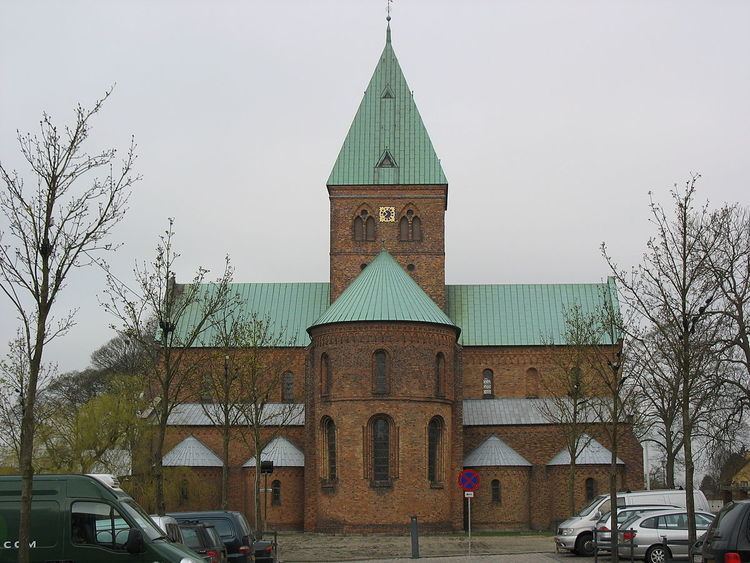 | ||
Similar St Bendt's Church - Ringsted, Merløsegaard Manor, Sorø Abbey, Antvorskov, Bregentved | ||
Ringsted Abbey was one of the earliest and most influential Benedictine houses in Denmark.
History
Ringsted was one of Denmark's earliest towns and in Viking times a center for worship. The town had a royal mint in 1020 and a Benedictine priory was established by Sven Estridsen before his death in 1076, but not completed until 1081 or 1082 under Bishop of Roskilde Svend Norbagge. It was dedicated to the Virgin Mary. The first priory church was constructed out of limestone. According to tradition the monks were brought by the king from one of his campaigns in Britain.
Ringsted Abbey owes its importance to its being the resting place of Canute Lavard. Duke Canute was murdered at Haraldsted forest just north of Ringsted in 1131.
It is unclear what happened to the original priory, but in 1135 King Erik Emune refounded Ringsted Priory with Benedictine monks from Odense. The abbey received its recognition by Pope Innocent II in 1138. St. Mary's Church (Danish: Sct Maria) is the oldest brick church in Scandinavia, a successor to the travertine church of 1080. St. Canute's bones were moved into a new chapel in the priory church at Ringsted in 1157 with the approval of St Canute's son, Valdemar I. The church became an immediate pilgrimage site. With the funds raised from pilgrims and royal patronage the abbey church was expanded and dedicated in 1170 with great ceremony. Subsequently Ringsted Priory became the location of the burials of many of Valdemar's descendants from 1182 until 1341. Valdemar I Sejr and Queen Dagmar were buried there. The church was later renamed St. Bendt's Church after St Benedict.
Ringsted priory became an abbey in the mid-13th century and by that time was so influential that its abbot was a permanent member of the State Council (Danish: Rigsråd) which advised Denmark's kings until the Reformation. His rank was equal to that of the bishops. Ringsted Abbey enjoyed almost continuous royal support as well as that of the most powerful noble families and bishops of Denmark. Its royal connections brought it extensive land holdings in Zealand and other parts of Denmark. The abbey also had papal protections and in 1193 received permission to hold mass even when Denmark lay under interdict as happened periodically in the stormy years of the 13th century.
The abbey suffered damaging fires in 1241 and 1300, but with the amount of income available quickly rebuilt even more splendidly than before.
Denmark became a Lutheran nation with the adoption of the Lutheran Ordinances in October 1536. Ringsted once again received special treatment. All other monastic houses were closed, but Ringsted remained open, though under the direction of a Lutheran superintendent. The monks eventually abandoned their abbey and became ordinary Danes or traveled south to join other Benedictine houses in Germany. In time the abbey and all its properties reverted to the crown.
Unfortunately, during the Reformation the entire archive of the monastery was destroyed. The national archives contain a few letters from the 15th century and bit of the Ringsted Book which outlines the monetary's privileges.
In 1592 Ringsted Abbey was given to Lave Beck a nobleman and royal counselor and was transformed into a large manorhouse. In the 17th century Ringsted Abbey came into the possession of the Seefeldt family. The abbey's outbuildings gradually fell into disrepair and were torn down. In 1806 a fire destroyed the entire complex except for the church which remains today.
